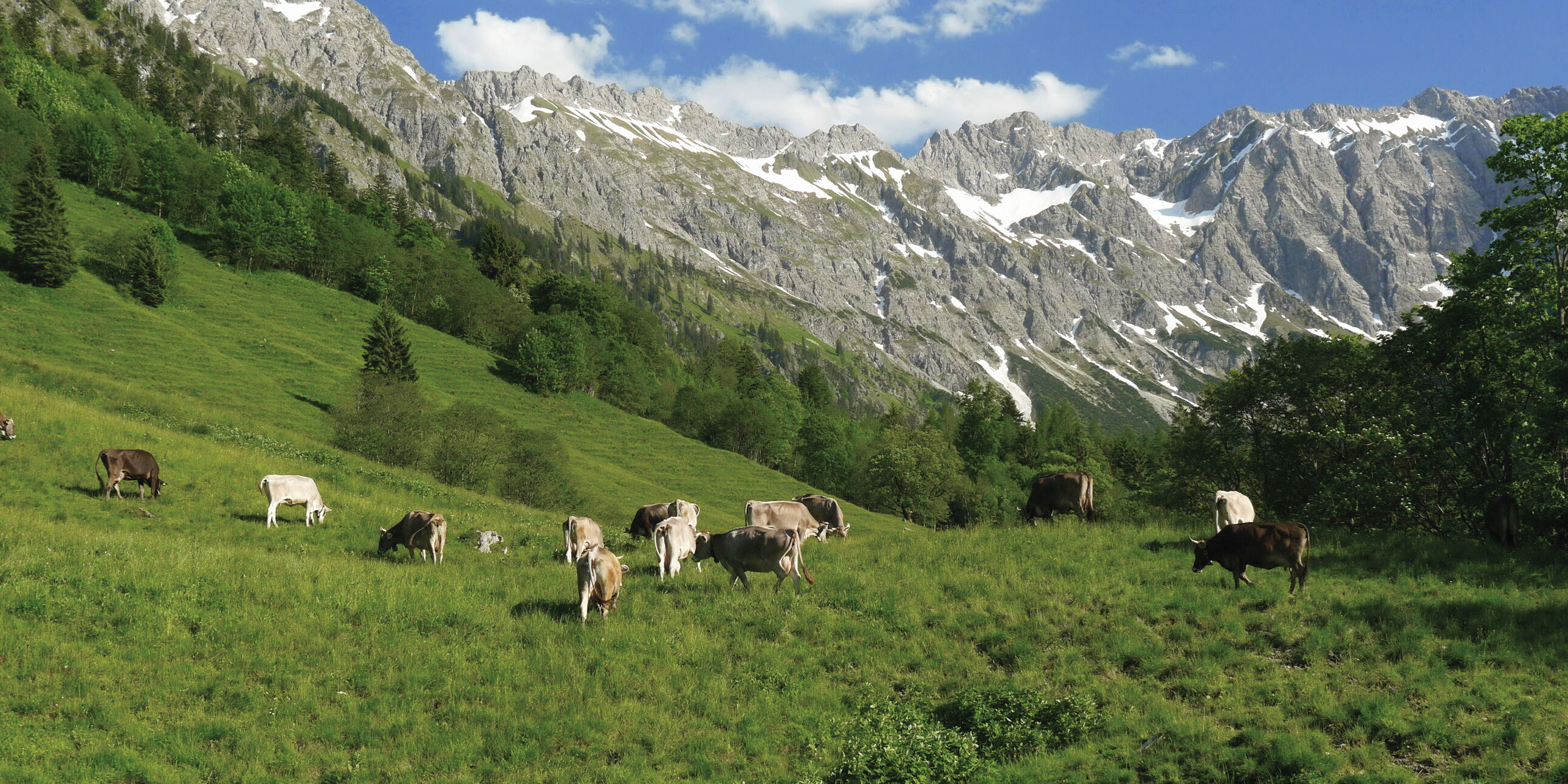
The Fuggers in Bad Hindelang:
alps and spears for the emperor
A Fugger House, Art, Four Alps: Iron lured the Fuggers to Bad Hindelang
By 1529, the Fuggers had established a presence in the Allgäu Region, when their horses began spending summers in the Hindelang Alps. First it was attempts at gold mining and refining iron ore with water powered hammer mills on the Ostrach river which attracted the Augsburg mining company to the area of present day Marktgemeinde Bad Hindelang. Four of the Fugger’s Alps in the Ostrach river valley and in Retterschwang valley still exist today. A house of the Fuggers in Bad Hindelang and one of the Fuggers gifts of a valuable painting of the virgin Mary by Hans Holbein d. Ä. In Bad Oberdorf bring them to mind. Ore mines are a minder that the place known as “Ruhrpott of the Allgäu” was where the Fugger produced thousands of spears. Three hammer mills in Ostrach are unique monuments of pre-industrial metal processing.
Tip
Iron ore was already mined in the Ostrachtal region by the Romans. Around 1500, the Fuggers were drawn to the area. Extensive logging for the smelting mills left vast open pastures on the mountainsides in Hindelang, which led to further economic development there. In 1549 the Fuggers had blacksmiths in Hindelang produce 6,980 iron spears for emperor Charles V. They also brought their horses to graze in the summers on four of the alps which still exist today - four of the 45 alps from Bad Hindelang which were named “intangible cultural heritage” in Bavaria.
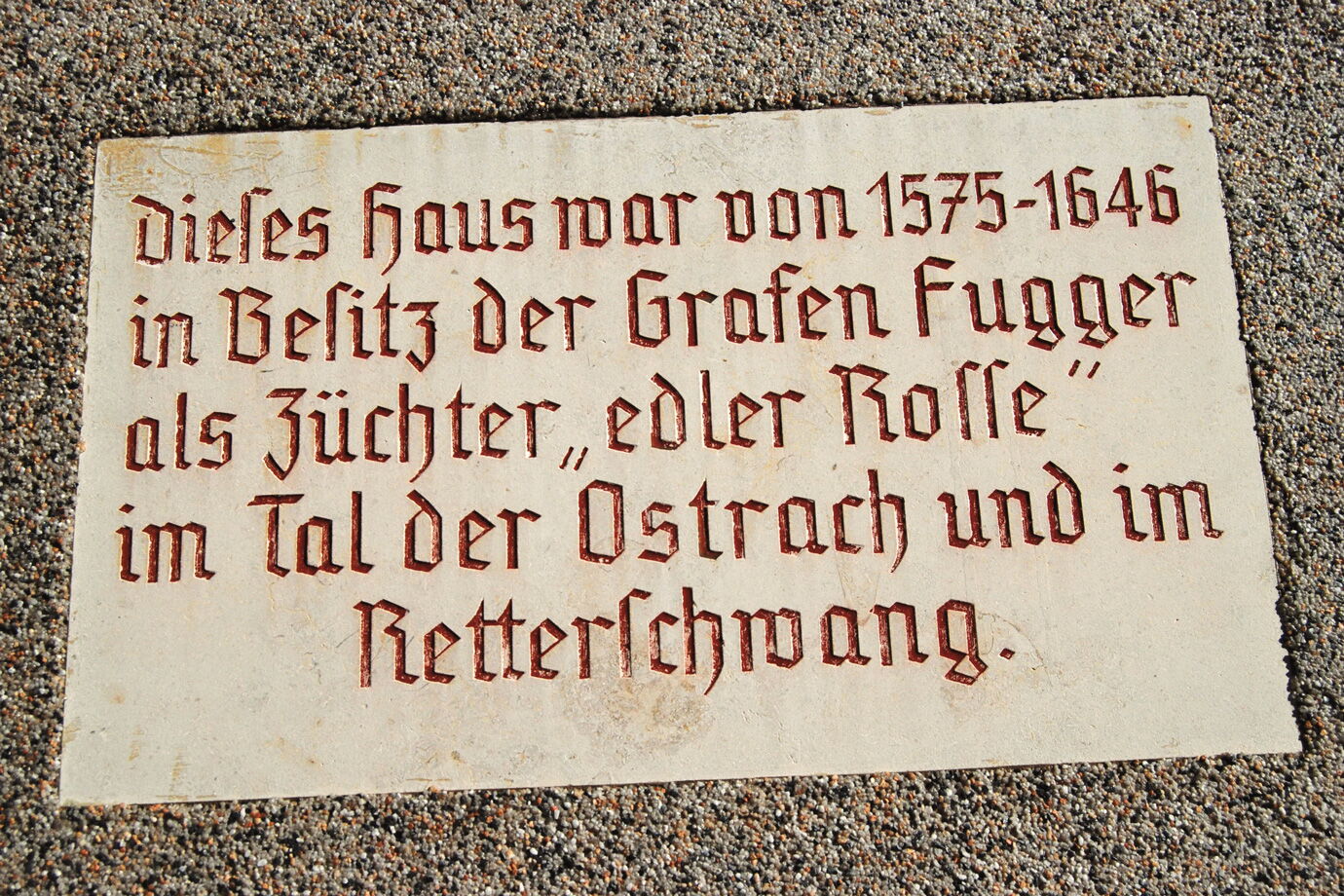
In 1529, the Fuggers bought property in Hindelang, Allgäu, because they had moved a horse stud farm from Hungary to Ostrachtal. In 1549 they financed the production of 6,980 iron spears, which were manufactured by blacksmiths in Ostrach and then delivered to Innsbruck. In addition to the stud farm in Hindelang, the Fuggers purchased farms and land in Retterschwangtal. In 1648 the Prince Bishop of Augsburg bought the stud farm and had it rebuilt. In 1650 a hunting castle for the Bishop was built next to the farm. For the chapel at the castle, the Fuggers gave the Bishop a painting by Hans Holbein (the elder) of the virgin Mary. The painting was forgotten and first re-discovered in 1935. It can be viewed in the church in Bad Oberdorf (Our Lady of Ostrachtal and St. Jodocus, open daily).
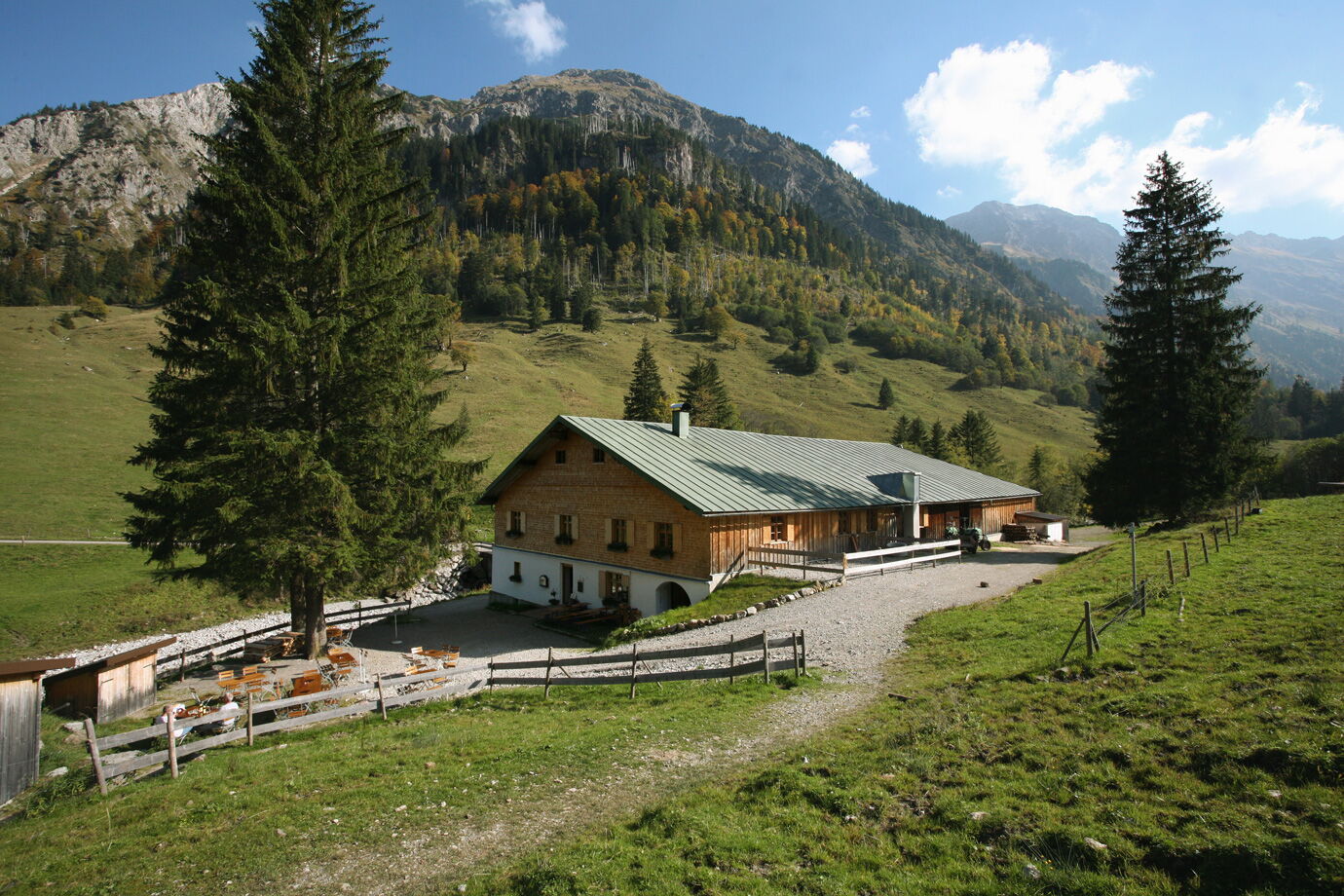
The Fugger’s horses grazed in the summer on the Mitterhaus Alps in the Retterschwanger valley
A plaque on the former Fugger house on Marktstraße 24 is a reminder that the building belonged to the Fuggers from 1575 until 1645. A coffered ceiling is said to originate from that time. Markus Fugger (1529-1597), the eldest son of Anton Fugger, wrote a book “Von der Gestüterey” in 1584, which became an early standard reference book about horse breeding and riding. He bred horses in Hindelang. In 1618 Maximilian Fugger (1587-1629) also purchased an estate in Retterschwangtal. Maximilian, the Lord of Boos (and in 1620 of Babenhausen) was the the son of Jakob Fugger (1542-1598), Lord of Babenhausen, Wellenburg and Boos and the brother of Markus, the equestrian expert. Maximilian also owned a horse farm in Hindelang. In 1631 his estate had been passed on to Franz Fugger, Lord of Welden and grandson of Markus Fugger. It was Franz who first attempted to sell the entire estate in Hindelang.
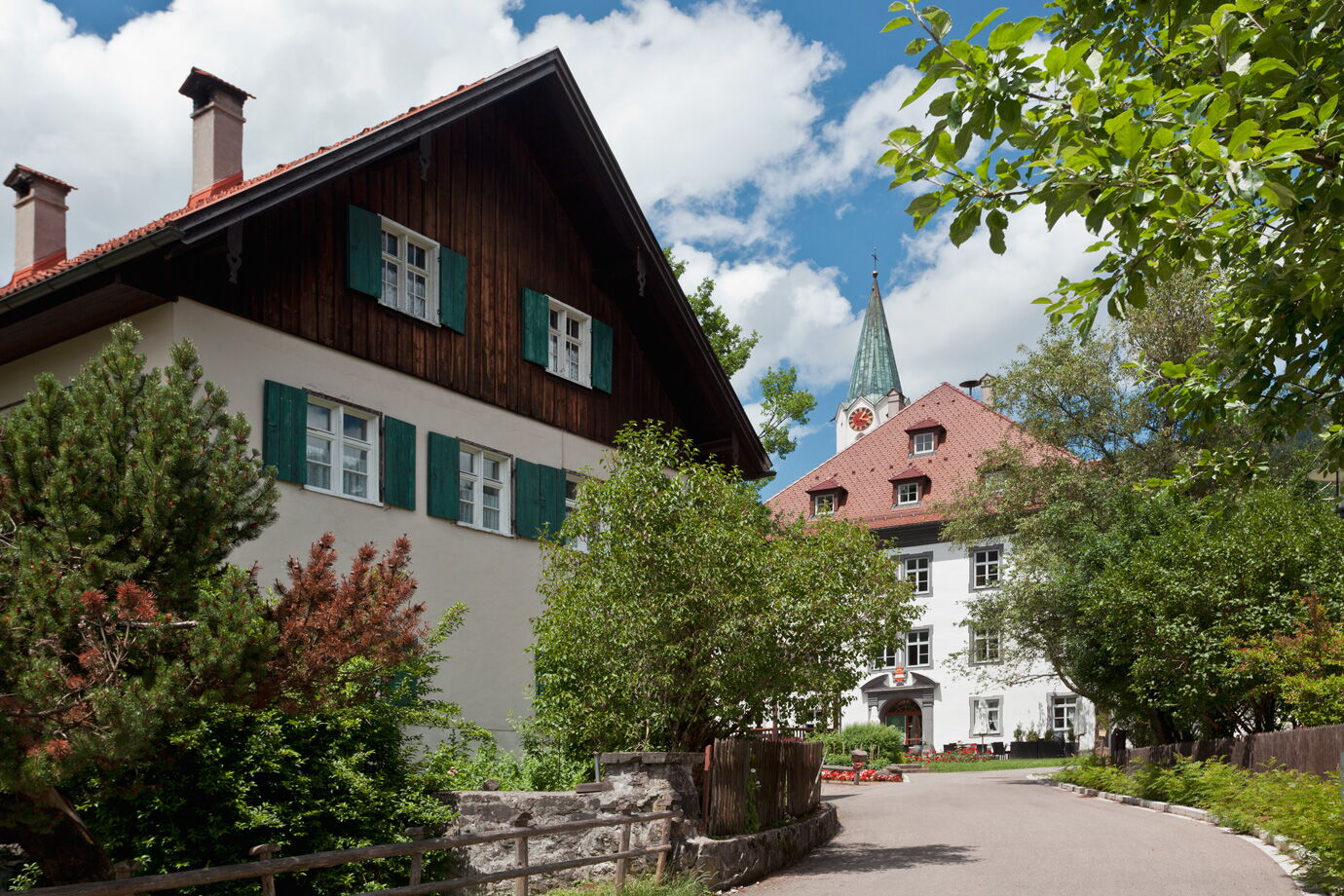
The Augsburg Fuggers and the Economy of the Oberallgäu Alps: Mountain Pastures for Strong Horses
First, in 1643, the Mitterhaus alps were acquired by the Fuggers, but they were already put up for sale along with the rest of the property in and around Hindelang in 1646. There is also a plaque in honor of the Fuggers at this location (the present structure was built in 1677/78). Maximilian’s brother Hieronymus Fugger (1584-1633), Lord of Wellenburg and Rettenbach, also purchased the Laux-Alps (Laux = Lukas) on the Jochpass (present day Gund-alps above Oberjoch) and the Hornbach alps in Hindelang in 1619. The Stierengratsgund was also Fugger property.
Sights, Current Exhibitions and Tips
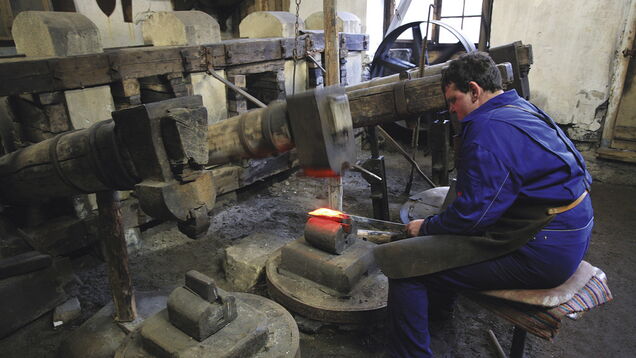
Three Blacksmiths on the Ostrach River
Three water powered hammer mills on the Ostrach originate from the time around 1500. Blacksmiths used powerful hammers to produce weapons. Today wrought iron cookware is sold there.
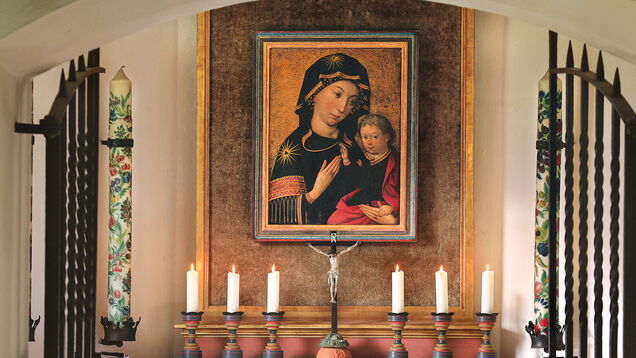
In Bad Oberdorf - an Artistic Treasure from the Fuggers
A valuable painting of the virgin Mary by Hans Holbein the elder in the Bad Oberdorf church was given by the Fuggers to the Bishop of Augsburg as a gift for the chapel in his hunting castle - the present day city hall building.
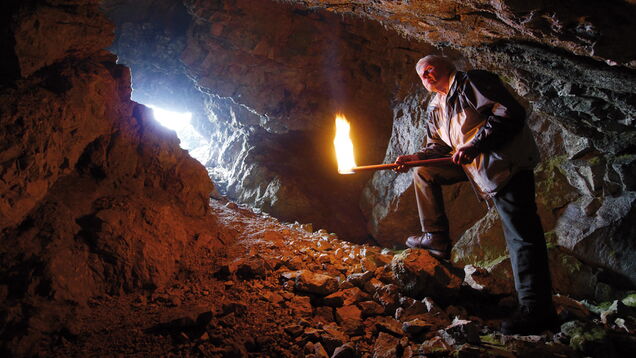
The Search for Iron Ore: Mining in Erzberg Mountain
The Erzberg alps, a mining shaft and rubble deposits are a reminder of the time of mining iron ore. There were still more mines in Hintersteiner valley as well as in Hirschberg, the local mountain of Bad Hindelang.
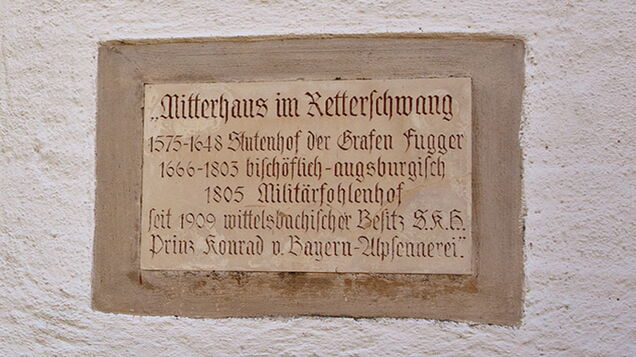
Mitterhaus Alp - Cheese and a Memorial Plaque
The Fugger’s noble horses grazed in the summers on the Mitterhaus Alps in Retterschwangtal valley. A commemorative plaque reminds visitors of that time. Hikers can enjoy the locally made cheese on their way through the Mitterhaus alp.
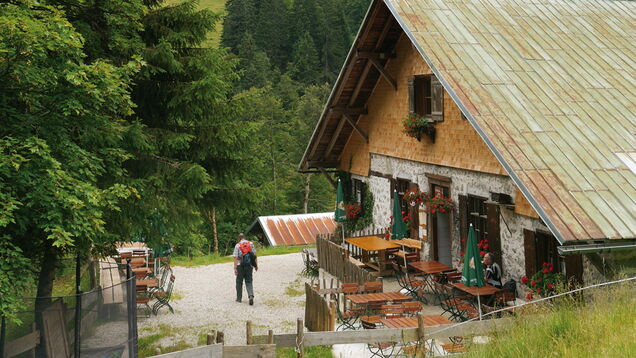
Engeratsgund Alp: Once Fugger Owned, Now Food Service
The lake called Entgratsgundsee gives the high alpine meadows their name. On this alp, which the Fuggers sold to the Bishop of Augsburg, visitors today can stop at a sandwich shop.
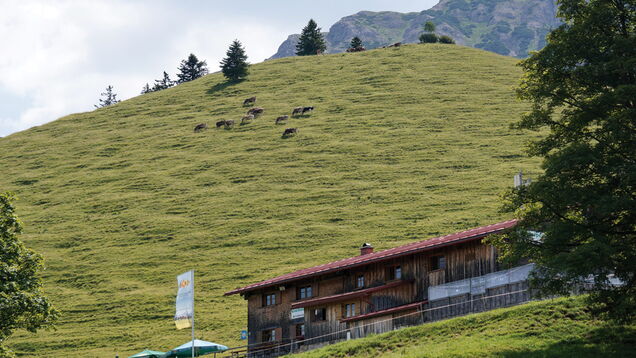
Gund Alp - Snack where the Fuggers bred Horses
Beginning in 1619, the present day Gund alp, high above Oberjoch, was owned by the Augsburg Fuggers, who bred horses there. Today visitors can stop there for a snack.